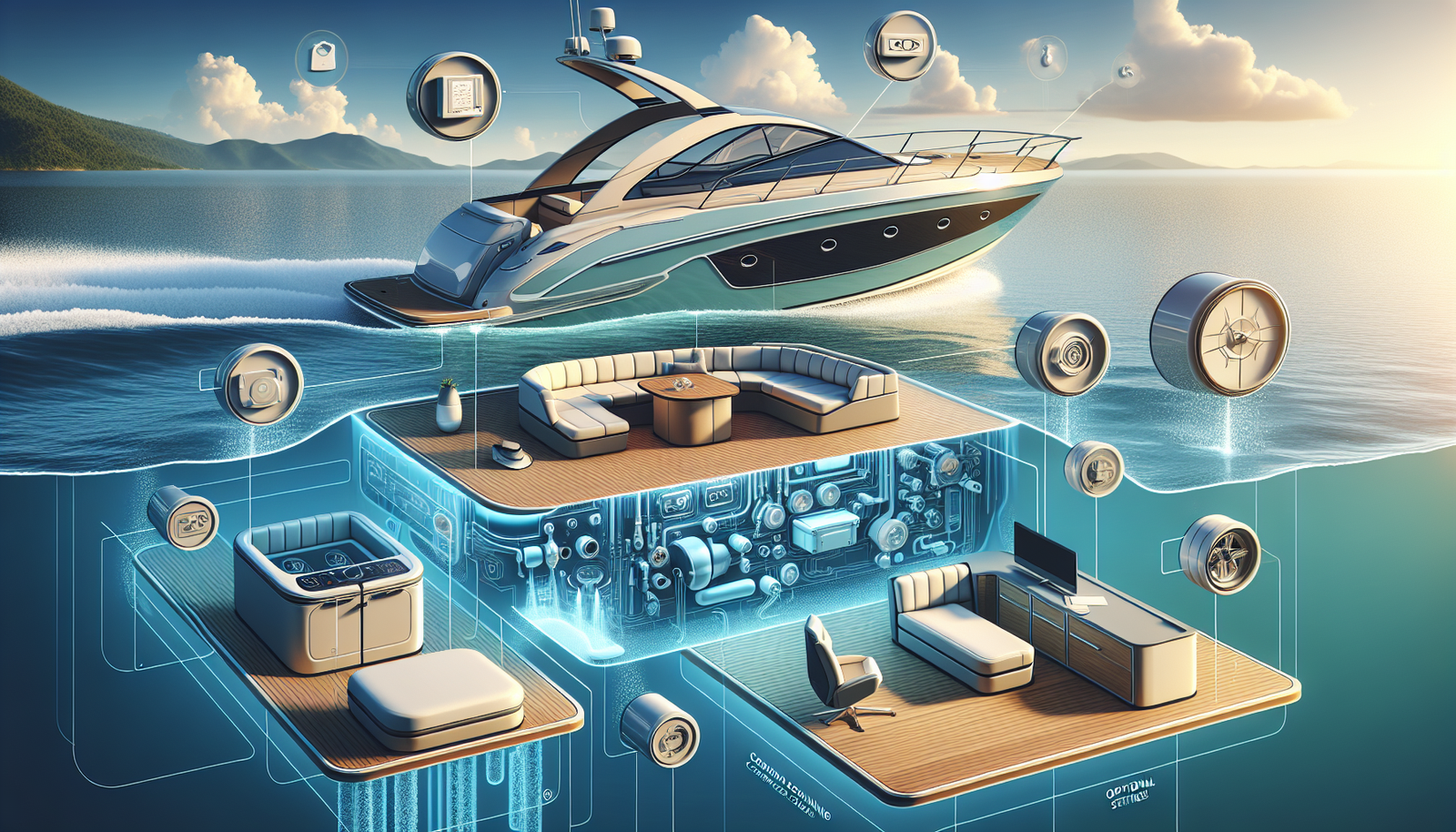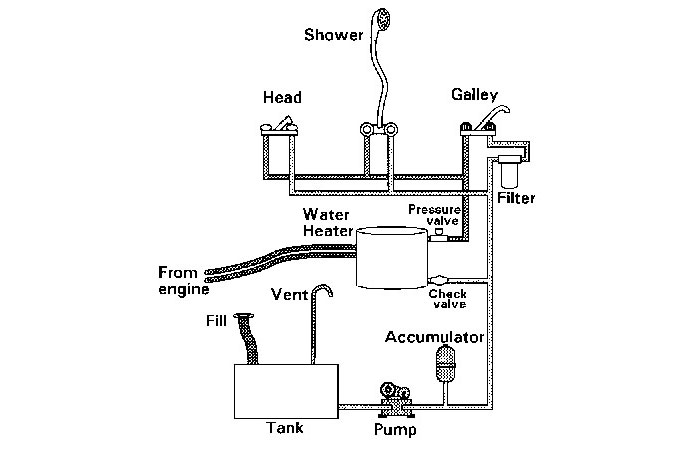Imagine cruising along the open waters, the wind in your hair, and the sun on your face. As you navigate your beloved boat, you realize the importance of a well-functioning plumbing and electrical system. In this article, we will explore the best ways to customize your boat’s plumbing and electrical systems, ensuring a safe and comfortable experience for all your future nautical adventures. Whether you’re a seasoned sailor or new to life on the water, these tips and tricks will empower you to tailor your boat’s systems to your exact needs. Get ready to take your boating experience to the next level with these expert recommendations.
Plumbing Systems
Assessing your current plumbing system
When it comes to customizing your boat’s plumbing system, the first step is to assess your current setup. Take a good look at your existing plumbing system and identify any areas that need improvement or upgrading. Are there any leaks or faulty connections? Is the water pressure consistent throughout the boat? Are there any areas where water flow is inadequate? Answering these questions will help you determine what changes or upgrades need to be made.
Choosing the right plumbing materials
Once you have assessed your current plumbing system, it’s time to choose the right materials for your boat. When selecting plumbing materials, it is important to consider durability, corrosion resistance, and compatibility with marine environments. Opt for high-quality materials such as stainless steel, brass, or marine-grade plastic fittings and pipes. These materials are specifically designed to withstand the harsh conditions of boating and ensure a long-lasting plumbing system.
Installing additional water storage
If you find that your boat’s current water storage capacity is lacking, consider installing additional water storage. Depending on the available space on your boat, you can opt for water tanks or bladders that can be easily integrated into your existing plumbing system. Having ample water storage is especially crucial for extended trips or when cruising in remote areas where freshwater sources might be limited.
Upgrading your freshwater system
Upgrading your freshwater system is another great way to customize your boat’s plumbing. This can include installing a larger freshwater tank, upgrading your water pump for increased water pressure, or adding a water filtration system to ensure clean drinking water. Upgrading your freshwater system not only improves the convenience and comfort of your boating experience but also ensures a reliable and hygienic water supply.
Enhancing your waste management system
proper waste management is essential for any boat owner. Customizing your waste management system can involve upgrading your existing toilet facilities to more efficient and eco-friendly options, such as composting toilets or vacuum flush toilets. Additionally, installing a holding tank or a blackwater treatment system can help you comply with environmental regulations and minimize the impact on the marine ecosystem.
Customizing your shower and toilet facilities
The shower and toilet facilities on your boat play a significant role in your comfort and overall boating experience. Customizing these facilities can involve installing more spacious shower stalls, upgrading the fixtures for better water efficiency, or adding features such as hot water showers or bidets. By customizing your shower and toilet facilities, you can create a more luxurious and convenient onboard experience.
Implementing a water filtration system
Having access to clean and safe drinking water is crucial while on a boat. Implementing a water filtration system can ensure that the water coming out of your taps and showerheads is free from impurities and contaminants. There are various options available, including carbon filters, UV water purifiers, and reverse osmosis systems. Choose a filtration system that suits your needs and the specific conditions you encounter while boating.
Creating a custom plumbing layout
Every boat has unique space restrictions and design considerations, and creating a custom plumbing layout can help maximize efficiency and functionality. Consider consulting with a marine plumber or boat designer to help you design a layout that optimizes the use of space and ensures easy access for maintenance and repairs. By customizing your plumbing layout, you can create a system that perfectly suits your boating needs.
Installing a hot water system
One of the luxuries of home that many boat owners want to replicate onboard is a hot water system. Installing a hot water system on your boat can provide you with the comfort of warm showers and easy access to hot water for cooking and cleaning. There are various options available, including instant water heaters or marine-specific hot water tanks. Whatever option you choose, make sure to consider the size and energy requirements that are suitable for your boat.
Adding a bilge pump system
A bilge pump system is an essential component of any boat’s plumbing system, especially for those that are prone to taking on water. adding or upgrading a bilge pump system can help remove excess water from your boat’s bilge area, keeping it safe and dry. Depending on your boat’s size and specific needs, you can choose from manual or automatic bilge pumps, or even opt for a combination of both. A properly functioning bilge pump system is crucial for keeping your boat afloat and avoiding any potential damage.

Electrical Systems
Evaluating your current electrical setup
Before diving into customizing your boat’s electrical system, it is important to evaluate your current setup. Check for any loose connections, damaged wiring, or outdated components. Assess the capacity of your electrical system and determine if it needs upgrading to accommodate any additional electrical components or appliances you plan to install. By evaluating your current electrical setup, you can identify any areas that require improvement or upgrading.
Selecting the appropriate wiring and cables
When customizing your boat’s electrical system, selecting the appropriate wiring and cables is crucial for safety and efficiency. Opt for marine-grade wiring and cables that are specifically designed to withstand the harsh marine environment, including exposure to saltwater and high humidity. Make sure to choose the correct gauge and type of wire for each circuit and component to ensure optimal performance and minimize the risk of electrical hazards.
Adding more electrical outlets
Having an adequate number of electrical outlets on your boat is essential for powering various appliances and charging devices. Assess your current electrical outlet layout and consider adding more outlets in convenient locations throughout your boat. This can include adding outlets near seating areas, in cabins, or on the deck. By adding more electrical outlets, you can enhance the functionality and convenience of your onboard electrical system.
Install marine batteries and chargers
To ensure a reliable power source on your boat, installing marine batteries and chargers is essential. Marine batteries are designed to withstand the demands of boating, including vibration, impact, and deep cycling. Choose batteries with the appropriate capacity for your electrical needs and install a reliable charger to keep them charged and ready for use. Having a well-maintained battery bank will ensure a constant power supply for your boat’s electrical system.
Enhancing your lighting system
An effective lighting system can improve the ambiance and safety on your boat. Consider upgrading your lighting system by replacing outdated bulbs with energy-efficient LED lights. LED lights not only consume less power but also generate less heat, making them ideal for boats. Additionally, consider installing dimmers or adjustable lighting fixtures to create a more versatile and customizable lighting experience onboard.
Integrating renewable energy sources
Incorporating renewable energy sources into your boat’s electrical system can help reduce your reliance on traditional power sources and minimize your environmental impact. Options for integrating renewable energy sources can include installing solar panels, wind turbines, or hydro generators. These sources can help supplement your battery bank and provide power for various electrical needs while boating. Determine your energy requirements and consult with a professional to design a system that suits your boat and cruising habits.
Upgrading your navigation and communication systems
Upgrading your navigation and communication systems is crucial for ensuring safety and staying connected while on the water. Consider installing the latest marine electronics, such as GPS systems, chart plotters, radar, and VHF radios. These systems can provide accurate navigation and real-time weather updates, enhancing your boating experience and enabling effective communication with other boaters or emergency services if needed.
Installing a generator
If you require a consistent and reliable power supply while on your boat, installing a generator is a great option. A generator can provide ample power to run various appliances and electrical systems, including air conditioning, refrigeration, and other high-demand devices. Choose a generator that is appropriately sized for your electrical needs and consider factors such as noise level, fuel efficiency, and ease of maintenance when selecting the right generator for your boat.
Customizing your entertainment system
To enhance your onboard entertainment experience, consider customizing your boat’s entertainment system. This can involve installing a high-quality sound system with marine-grade speakers, adding a television and DVD player, or even integrating streaming services and internet connectivity. Choose entertainment options that are suitable for your boat’s size and layout, ensuring that they are properly installed and protected from the marine environment.
Implementing safety and security features
Safety should always be a top priority when customizing your boat’s electrical system. Implementing safety features such as circuit breakers, ground fault circuit interrupters (GFCIs), and fire detection systems can help protect your boat and its occupants from electrical hazards. Additionally, consider installing security systems, such as motion sensors and alarms, to deter theft and ensure the safety of your boat when it is unattended.
In conclusion, customizing your boat’s plumbing and electrical systems can greatly enhance your boating experience. By assessing your current systems, choosing the right materials, and making upgrades or additions, you can create a more comfortable, efficient, and reliable onboard environment. Whether it’s improving water storage, upgrading lighting, or integrating renewable energy sources, these customizations can tailor your boat to meet your specific needs and preferences. Don’t hesitate to consult professionals to ensure that your customizations are safe and compliant with marine regulations. With the right customizations, your boat will be fully equipped to provide you with years of enjoyable and hassle-free boating adventures.


